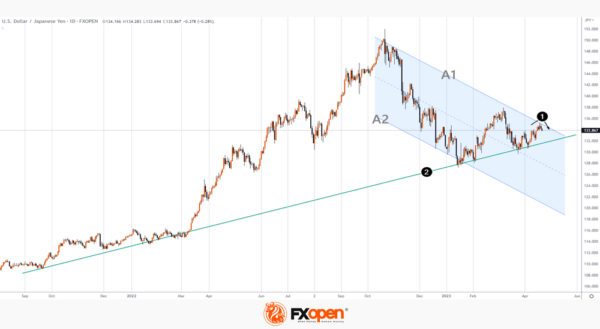High inflation is not such a big problem for Japan as it is for, for instance, the US and the UK. Although the sharp jump in the Core CPI in Japan two months ago to 4.1% in annual terms caused alarm, the data published this morning (although it testified to an unusually high level of inflation for Japan) generally reduced the degree of alarm:
- Core CPI (today): 3.1%: (expected 3.1%).
- Core CPI (a month ago): 3.1%.
- Core CPI (a year ago): 0.8%.
As a result of published data on inflation, the yen strengthened in the morning. The demand for the Japanese currency is also facilitated by the following facts:
- the banking crisis has practically not affected the banks of Japan;
- oil prices are adjusting after the decision to limit OPEC+ production (oil is an important import product to Japan);
- disappointing first-quarter financials from some companies in the US. Foreign investors poured almost $12 billion into Japanese equities last week, their largest investment since at least January 2018, according to Reuters.
The daily chart shows that the USDJPY rate is forming a reversal (1) from the upper border of the descending channel A1-A2, as a result of which the price may again test the long-term trend line (2). More frequent attempts to touch this line may indicate that the bears’ attempts to break through it are becoming more and more persistent.














